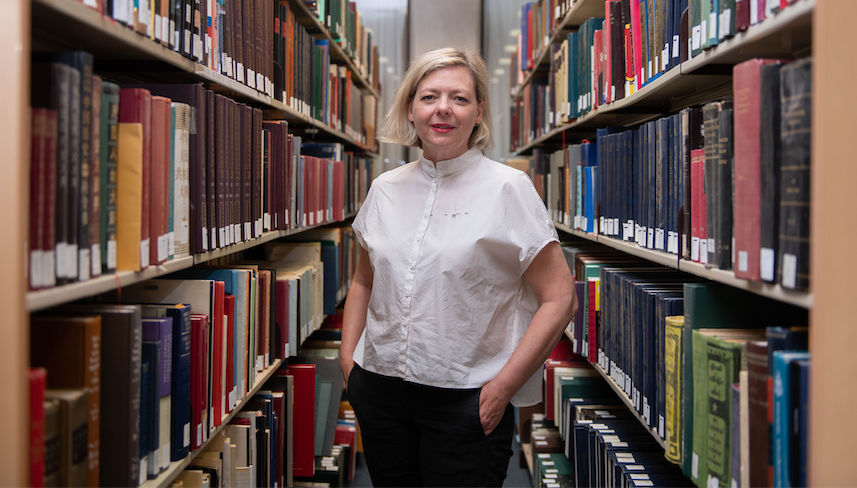
Historian Dr Karen Downing has been part of a project using new methods to search the National Library’s Trove database to find a vast archive of more than 21,000 short stories that had been published in Australian newspapers from 1803 to 1955, reports KATHRYN VUKOVLJAK.
A NEW series of eight short stories capturing the lucky strikes, greed, passion and crime of Australia’s gold rush era has been released by local publisher Obiter.
“Tom Morison’s Golden Christmas and Other Lost Australian Goldmining Stories” is the third in a series of books of stories that were originally serialised in the Australian press in the mid-1800s.
Publisher, co-curator and historian Dr Karen Downing says the books came about because of a project led by ANU associate professor Dr Katherine Bode, working with bibliographer Carol Hetherington.
The project “To Be Continued” used new methods to search the National Library of Australia’s Trove database to find a vast archive of more than 21,000 short stories that had been published in Australian newspapers from 1803 to 1955.
“These would have been one of the main sources of fiction during that time, with some authors new or anonymous, or well-known authors whose work was reproduced in serial form over a number of editions,” says Karen.
“There was usually one per week, and we know people liked them – in a lovely story called ‘The Widow Blane’, a miner asks if the newspapers have come in, as his wife is waiting for the next instalment!”
 As the stories had never been published outside the press, Karen approached Katherine and suggested printing them in book form.
As the stories had never been published outside the press, Karen approached Katherine and suggested printing them in book form.
“The format appeals to readers but also makes it easy for literary scholars to access the text,” says Karen.
“We read close to 200 stories and whittled them down to 20, with an introduction written by an academic to contextualise the story.”
Karen says Obiter has published one “To Be Continued” book a year since 2018, starting with “How I Pawned My Opals”, short stories by author Catherine Martin featuring feisty heroines in a “sort of chick lit” style, and “Christmas Eve in a Gum Tree”, where the festive season was marked by isolation, fire, flood, cyclones and drought.
“Many stories were set at Christmas, and I suspect it was a quieter time when people would read,” she says.
“There are fantastic descriptions of the Australian environment and accounts of natural disasters – it was always a harsh place.
“For Europeans it was such a different environment, but so many of the authors found real beauty in the animals, birds, vegetation and landscapes and the stories capture that.”
Karen says that, as a historian, she sees the books as another way into the past, an artefact that gives a sense of how people lived, what they felt and thought.
“You can’t take the stories as fact but fiction is always a reflection of the world. It’s not completely made up,” she says.
“We know some authors had worked on the goldfields and were writing from first-hand experience. Some lay claim to a ‘true story’, but that might mean they’d heard it on the fields. We don’t know how much truth there is in that.
“But it’s not the truth so much that’s fascinating. It’s the conditions, the relationships, what was of importance at that time and imagining what readers were getting from it.”
Karen says the stories were chosen for both their literary and entertainment value, while trying to cover all Australian states and feature female authors where possible.
“I like the female characters in ‘How I Pawned my Opals’. Catherine Martin’s stories feature wilful women who, like her, would make their own way in life, earn their own income and make their own decisions,” she says.
Many stories also show the diversity of people on the goldfields, from colonial white Australians, Chinese, other migrants and women to indigenous Australians.
“The texts are not unproblematic, with many terrible stereotypes, but not all,” she says.
“‘Tom Morison’s Golden Christmas’ features a story called ‘Gold Thirst’ where everyone behaves appallingly in their quest for gold, except the main character Lizzie, who is described by the term ‘half-caste’. She has the most integrity and honesty and I liked that, and the ambiguity of the characters that weren’t stereotypes.
“We’re seeing very complex characters and just the fact that they’re all there gives a different perspective of the goldfields to the popular imaginings of the hero diggers and mateship.”
“Tom Morison’s Golden Christmas and Other Lost Australian Goldmining Stories” and the books in the “To Be Continued” series are available at obiterpublishing.com, $25 each.
Who can be trusted?
In a world of spin and confusion, there’s never been a more important time to support independent journalism in Canberra.
If you trust our work online and want to enforce the power of independent voices, I invite you to make a small contribution.
Every dollar of support is invested back into our journalism to help keep citynews.com.au strong and free.
Thank you,
Ian Meikle, editor




Leave a Reply